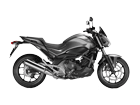I think a lot of you miss the point when talking about torque wrench use, even if a wrench is 10% out it can still be a lot safer than a ham fisted home mechanic guessing the tightness of the important bolts, and as for things with 2 or more fasteners as in brake calipers, its far safer to have both bolts at the same tension, as one tighter than the other can cause the other to drop out! Sure get them calibrated, I have mine checked, but don't panic if they are slightly out.


